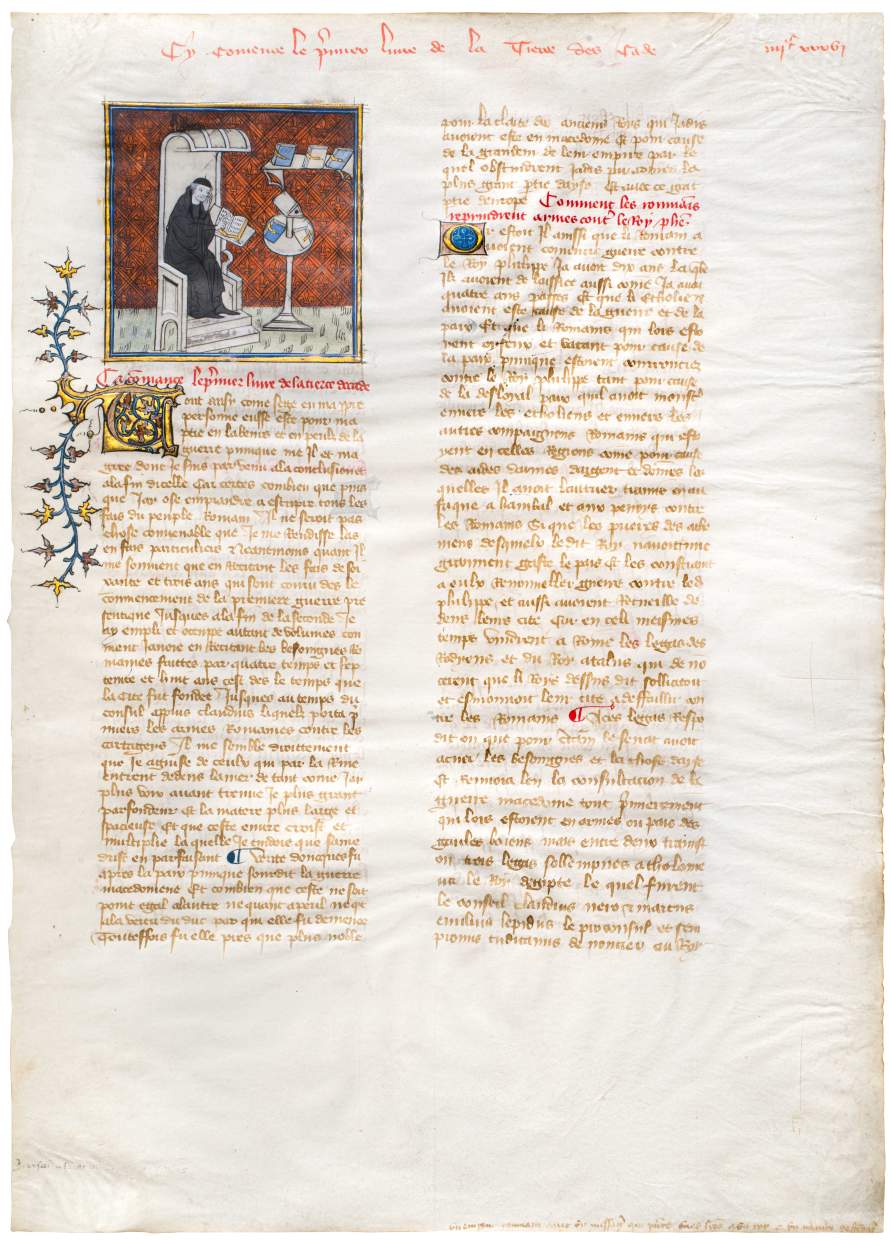

Titus Livius at work
Miniature on a leaf from Livy’s Histoire romaine (Decade III, book 1) in the French translation of Pierre Bersuire on vellum, illuminated by Perrin Remiet.
France, Paris, c. 1390.

This elegant miniature offers a fascinating glimpse into the medieval perception of the great classical scholar and author, Titus Livius (engl. Livy). The column-wide miniature depicts Livy in academic robes, seated at his lectern, with his left hand lightly touching his cheek in a gesture of deep thought. His facial expression is one of concentration, or perhaps consternation, with regards to the work ahead. To his right, a bookstand and shelf support several hefty volumes with gold clasps, mirroring the gilt edges of the open book. The background – of what might be his study – shows a repeating fleur-de-lys motif coloured in a burnt terracotta. The scene itself is framed with a golden border.
The text of the leaf contains Livy’s prologue to Decade IV, in Pierre Bersuire’s translation of the Histoire romaine (his Opening Decade III, book 1). In the prologue to his work Livy expresses feeling overwhelmed by the task at hand, an emotion that is captured in this miniature. The result was the first translation of any major classical author into French and remained extremely popular at the French court.
The style of the illuminator, Pierre Remiet, is also notable: faces are fleshy and pale, with the figures rendered in demi-grisaille. Remiet illuminated many mostly secular, historical volumes in the vernacular for the French royal court and other highly placed figures in the court’s orbit, including Dukes Jean de Berry and Louis d’Orléans.
Notably, our leaf features a rare instruction to the illuminator along the bottom right margin: un emperur rommain auec un messag’[e] qui puice ...[?]...l[i]vree a un roy et un nauire de Rodae (‘a Roman emperor with a message that then [is] delivered to a king and a ship from Rhodes’). This bit of text offers not only a glimpse of the active workshop practice of a libraire communicating the visual program of a large history manuscript to one of likely various illuminators on the project, but also a change of decision at a later point. Rather than an illustration of the following chapters’ narratives, the illuminator has inserted an author portrait of Livy, which better suits the prologue text that follows directly below the miniature.



